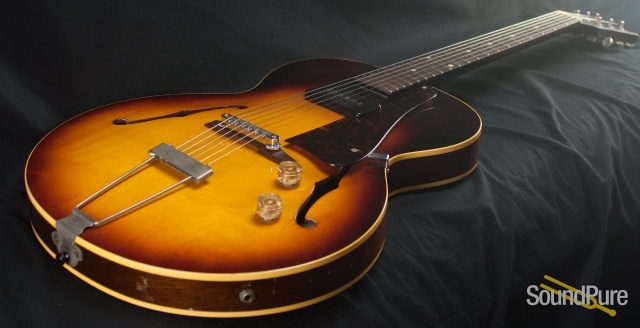

Our preferred method of payment is bank wire transfer or cash.
1946 gibson es 125 free#
If you are from out of town and are on a tight schedule / in an out of town band playing a show here and/or would like to visit on short notice and/or well outside business hours, feel free to contact us - it wouldn't be the first time we show people around well after midnight. It's a hidden entrance, so please don't ring random doorbells, instead call for questions and appointments during business hours (9am to 5pm CET).

Our showroom is located at TurnBern, Switzerland. Yeahman's is open to anybody who shares our passion! If you happen to be in the area or would like to travel to come check an instrument out, please don't hesitate to write. Here you will mostly find selected instruments of the following brands: Fender, Gibson, Rickenbacker, Epiphone, Gretsch, Marshall, Vox, Ampeg, Guild, Greco, Tokai, Squier JV, Burny, Maxon, Ibanez, Orville and many more.Īs for now, there are no fixed opening hours, instruments can be tried out and picked up by appointment only. D (Double Pickup) models included a 3 position toggle switch to select each pickup individually or both pickups simultaneously.A small shop in Switzerland selling vintage and used electric and acoustic guitars, basses, amplifiers and assorted effect pedals. 022 microfarads was used for the tone circuit. Volume and tone controls were 500k Audio taper pots. This pickup is, however, not as short as those found on an ES-330TD which has the pickup mounted flush to the end of the fingerboard.Ĭoils were wound to approximately 10,000 wraps although DC resistance of these pickups can vary greatly Since the fingerboard sits flush to the body (as opposed to an ES-175) the ES-125 requires a shorter neck pickup than a typical dogear. The ES-125 also used a tapered dogear cover for their neck position pickups with a thickness of 4/16" on the treble side and 5/16" on the bass side. The model used for the ES-125 has a string spacing on the neck pickup of 1 15⁄ 16" from high E to low E. The ES-125 was updated again in 1950 with an adjustable P-90 pickup and dot inlays.

Upon its reintroduction in 1946, the ES-125 changed in a number of ways including a wider body, a new P-90 pickup, and trapezoid inlays. Upon its reintroduction in 1946, the ES-125 changed in a number of ways including. The ES-125 evolved out of the ES-100 in 1941 and was produced until 1942. In 1950 the P90 transitioned to 6 adjustable poles between two Alnico 5 bar magnets. The ES-125 evolved out of the ES-100 in 1941 and was produced until 1942.

The original had 6 Alnico slug pole pieces. The ES-125 was equipped with one P90 pickup.


 0 kommentar(er)
0 kommentar(er)
